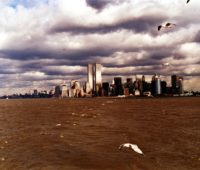The spatial history of São Paulo’s Brasilândia neighborhood reveals broader truths about the city. From its origins in the early twentieth century through the 1985 Black Women’s Collective celebration of the renaming of a public plaza to the city’s plan for its newest metro stop, Andrew Britt’s work shows how African descendants in São Paulo were persistently displaced and persistently present. The racialized space of Brasilandia tells a layered story of Black enslavement, forced migration, urban redevelopment, and Black self-determination, with echoes far beyond São Paulo.


















